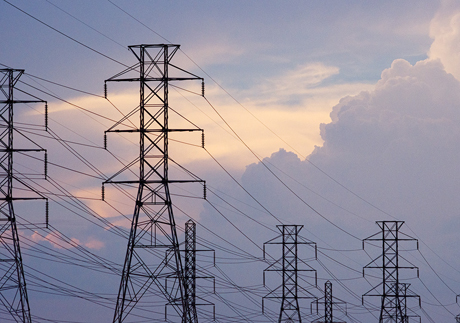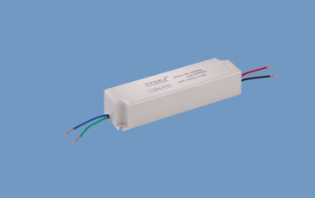news
Designing an Efficient Industrial AC-DC Converter
Author: ZYG Power Module Time: 2023-5-9
In modern industrial applications, AC-DC converters play a significant role in transforming electrical power between different voltage levels and frequencies. These converters are essential for powering a wide range of devices, from small electronic circuits to heavy machinery. With the increasing demand for more efficient and reliable power supplies, it is essential to design AC-DC converters that can meet the requirements of industrial applications.
The efficiency of an AC-DC converter is a critical factor that determines its performance. Higher efficiency means that less power is dissipated as heat, resulting in lower operating temperatures and longer device lifetimes. To achieve high efficiency, designers must consider several factors, including power factor correction, switching frequency, and topology.
Power factor correction (PFC) is a technique used to improve the efficiency of AC-DC converters. It involves controlling the input current to the converter to match the voltage waveform, reducing the harmonic distortion and improving the power factor. PFC can significantly improve the efficiency of AC-DC converters, reducing power losses and increasing the power factor.
Choosing the right switching frequency is also critical to achieving high efficiency. A higher switching frequency allows for smaller and lighter components, reducing the overall size and weight of the converter. However, a higher switching frequency also increases switching losses, reducing efficiency. Designers must find the optimal switching frequency that balances size and efficiency.

Topology is another factor that affects the efficiency of AC-DC converters. There are several topologies available, including flyback, forward, and push-pull. Each topology has its advantages and disadvantages, and designers must choose the best topology based on the application’s requirements. For example, the flyback topology is commonly used in low-power applications, while the forward topology is suitable for high-power applications.
In addition to these factors, designers must also consider other design aspects, such as component selection, control circuitry, and thermal management. Choosing the right components, such as high-quality capacitors and inductors, can significantly improve the converter’s efficiency. Control circuitry, such as pulse-width modulation (PWM) circuits, can help regulate the output voltage and improve efficiency. Thermal management is also essential, as it can help dissipate heat and prevent overheating.
In conclusion, designing an efficient industrial AC-DC converter requires careful consideration of several factors, including power factor correction, switching frequency, and topology. By optimizing these factors and considering other design aspects, designers can create high-performance and reliable AC-DC converters that meet the demands of modern industrial applications.
Previous: Designing an AC-DC Converter Circuit: A Step-by-Step Guide
Next: AC-DC Converter Module: Efficient and Reliable Power Conversion Solution
relevant information
-
2022-5-20
Wholesale AC-DC converters make your equipment more convenient
AC-DC converters are used to convert alternating current (AC) to direct current (DC). These devices are used in a variety of applications, including power supplies for computers and electronics, automotive applications, and renewable energy systems. Wholesale AC-DC converters are a great way to save money on these devices. By buying in bulk, you can get a discount on the purchase price. These devices are available from a variety of suppliers, so it's important to compare prices and find the best deal. There are a few things to keep in mind when shopping for a wholesale AC-DC converter. First, be sure to find a supplier that offers a good warranty on the product. This will ensure you are...
View details -
2023-7-30
Bidirectional DC-DC Converter: A Versatile Solution for Efficient Power Conversion
Introduction In recent years, the demand for efficient power conversion systems has been increasing exponentially. With the ever-increasing use of renewable energy sources and the growing popularity of electric vehicles, the need for bidirectional DC-DC converters has become more critical than ever. This article aims to explore the significance of bidirectional DC-DC converters and their role in efficient power conversion. What is a Bidirectional DC-DC Converter? A bidirectional DC-DC converter is a power electronic device that allows the transfer of power between two DC sources in both directions. Unlike traditional unidirectional DC-DC converters, a bidirectional converter can convert power from a high voltage source to a low voltage source and vice versa. This capability makes it an invaluable tool for...
View details -
2022-12-30
DC-DC Converter Factory: How to Choose the Right One for Your Needs
When it comes to choosing a DC-DC converter, it's important to select the right one for your needs. Factors to consider include input voltage, output voltage, and current. Choosing the right DC-DC converter factory can be a daunting task. There are many factors to consider, such as quality, price, and delivery time. In this blog post, we will discuss how to choose the right DC-DC converter factory for your needs. When choosing a DC-DC converter factory, there are a few factors to consider, such as quality, price, and delivery time. It is important to select a factory that can produce high-quality products and deliver them on time. Price is also an important consideration. It is important to find a factory...
View details -
2023-7-11
ZP Series AC DC Converter: Efficient Power Conversion Solution
Introduction: In today's technologically advanced world, the demand for efficient power conversion solutions has never been higher. The ZP Series AC DC Converter is a revolutionary product that offers a reliable and efficient solution for converting alternating current (AC) to direct current (DC). This article will delve into the features, benefits, and applications of the ZP Series AC DC Converter, highlighting its significance in various industries. Features: The ZP Series AC DC Converter boasts an array of features that make it a standout choice for power conversion needs. Firstly, it offers a wide input voltage range, making it compatible with various power sources. This flexibility ensures that the converter can be used in diverse environments without any issues. Additionally, the...
View details -
2024-12-31
Special power supply: customized energy solutions that empower high-tech fields
In today's rapidly developing science and technology, special power supplies, as a unique force in the field of power supply, are providing indispensable energy support for many high-tech fields with their high degree of customization, high efficiency and high reliability. From precision medical equipment to deep-sea exploration equipment, from high-energy physics experiments to aerospace technology, special power supplies have become an important cornerstone for promoting scientific and technological progress and innovation with their unique technical characteristics and wide application fields. 1. Definition and characteristics of special power supplies Special power supplies, as the name suggests, refer to power supply equipment designed and manufactured to meet specific application requirements. Compared with traditional general power supplies, special power supplies have the characteristics...
View details -
2023-6-12
Bidirectional DC DC Converter: A Two-Way Power Transfer Solution
A bidirectional DC-DC converter is a power transfer solution that allows for two-way power conversion between two different voltage levels. This type of converter is commonly used in applications where power needs to be transferred bidirectionally, such as in electric vehicles, renewable energy systems, and battery charging systems. The bidirectional DC-DC converter is a device that converts power from a high voltage level to a low voltage level, or vice versa, depending on the direction of power flow. This is achieved by using a combination of power switches, inductors, capacitors, and control circuitry. The converter operates in two modes: buck mode and boost mode. In buck mode, the converter steps down the voltage from the high voltage level to the...
View details


















